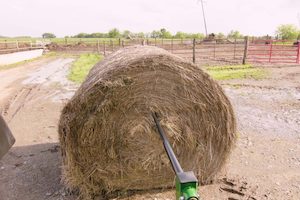Hay storage is essential to producers who are looking to not only reduce waste but also boost their overall bottom line. To provide more insight into proper hay storage, Jim Humphrey, a University of Missouri agronomist and member of the NRCS+MU Grasslands Project, is sharing his tips.
The size of the bale itself directly impacts how much hay is wasted, according to Humphrey. In general, larger-diameter bales tend to have less loss when compared to smaller bales. In a five-foot bale, for instance, more than 30% of the bale is in the outer six inches – the part most apt to be wasted. More than 26% is in the next six inches, and just about 20% is in the well-protected 12-inch center core.
Ideally, hay bales should be stored in a covered, protected area, according to Humphrey, which is one step that many producers often overlook. They should also be stacked end-to-end, as open-faced bales risk damage from sunlight and precipitation on the two exposed ends. The outer six inches on each side can make up about 20% of a 5x5.5-foot round bale. This is a significant amount of resources and cash in operation, says Humphrey.
In general, producers should strive to feed hay in well-drained areas and on elevated surfaces to reduce waste. In addition, they should also feed in small amounts and limit access to bales, according to Humphrey. Finally, the hay that is stored outdoors should be fed before the hay that is stored inside, as it is likely to spoil more quickly.
More information on hay storage can be found on the University of Missouri Extension website at extension.missouri.edu.
